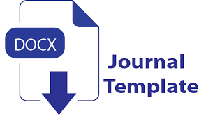Analisis Komparatif Algoritma Klasifikasi Machine Learning untuk Memprediksi Diabetes
Abstract
Diabetes Mellitus is one of the most common chronic diseases, this disease is also a major concern in global public health issues. in this study, a Machine Learning approach was carried out to help predict diabetes in the community. Machine learning is very useful in analyzing health data because of its good ability to process large amounts of data. A comparative study with several machine learning classification algorithms such as K-Nearest Neighbors (KNN), Support Vector Machine (SVM), Naive Bayes and Decision Tree (C4.5) has been conducted to determine which algorithm gives the best results in terms of predicting diabetes. Where, the features used in predicting diabetes include gender, age, history of hypertension, history of heart disease, history of smoking, BMI, level of HbA1c and blood glucose levels. From the results of this study, the accuracy rate of diabetes prediction for the K-Nearest Neighbors (KNN) algorithm is 92.5%, the Support Vector Machine (SVM) algorithm is 94.5%, the Naive Bayes algorithm is 90% and the last for the Decision Tree (C4.5) algorithm is 93.5%. So, from the test results of several machine learning classification algorithms it can be concluded that the Support Vector Machine (SVM) algorithm is the most optimal algorithm in terms of predicting diabetes.
Keywords: Machine Learning, KNN, SVM, Naive Bayes, Decision Tree, Diabetes.
Full Text:
PDFReferences
H. Feldman et al., “Standards of Care in Diabetes—2023 Abridged for Primary Care Providers,” Clinical Diabetes, vol. 41, no. 1, pp. 4–31, 2023, doi: 10.2337/CD23-AS01.
“Diabetes.” Accessed: Mar. 14, 2025. [Online]. Available: https://www.who.int/news-room/fact-sheets/detail/diabetes
“Diagnosis and classification of diabetes mellitus,” Diabetes Care, vol. 37, no. SUPPL.1, Jan. 2014, doi: 10.2337/DC14-S081.
S. Rafatirad, H. Homayoun, Z. Chen, and S. M. P. Dinakarrao, “Machine learning for computer scientists and data analysts: From an applied perspective,” Machine Learning for Computer Scientists and Data Analysts: From an Applied Perspective, pp. 1–458, Jul. 2022, doi: 10.1007/978-3-030-96756-7/COVER.
L. Oluwaseye, J. * A1, W. Doorsamy, and S. Paul, “A Review of Missing Data Handling Techniques for Machine Learning,” International Journal of Innovative Technology and Interdisciplinary Sciences, vol. 5, no. 3, pp. 971–1005, Sep. 2022, doi: 10.15157/IJITIS.2022.5.3.971-1005.
M. Unik, M. E. Aldo Fahrurrozi, H. Harmaini, and C. Kusuma, “MODEL PREDIKSI CURAH HUJAN MENGGUNAKAN ALGORTIMA MACHINE LEARNING YANG DITINGKATKAN,” Jurnal CoSciTech (Computer Science and Information Technology), vol. 5, no. 2, pp. 439–448, Aug. 2024, doi: 10.37859/COSCITECH.V5I2.7629.
M. M. İlman, Ş. Yavuz, and P. Y. Taser, “Generalized Input Preshaping Vibration Control Approach for Multi-Link Flexible Manipulators using Machine Intelligence,” Mechatronics, vol. 82, Apr. 2022, doi: 10.1016/J.MECHATRONICS.2021.102735.
L. Jen and Y. H. Lin, “A Brief Overview of the Accuracy of Classification Algorithms for Data Prediction in Machine Learning Applications,” Journal of Applied Data Sciences, vol. 2, no. 3, pp. 84–92, Sep. 2021, doi: 10.47738/JADS.V2I3.38.
A. Alanazi, “Using machine learning for healthcare challenges and opportunities,” Inform Med Unlocked, vol. 30, p. 100924, Jan. 2022, doi: 10.1016/J.IMU.2022.100924.
M. Javaid, A. Haleem, R. Pratap Singh, R. Suman, and S. Rab, “Significance of machine learning in healthcare: Features, pillars and applications,” International Journal of Intelligent Networks, vol. 3, pp. 58–73, Jan. 2022, doi: 10.1016/J.IJIN.2022.05.002.
M. Bari Antor et al., “A Comparative Analysis of Machine Learning Algorithms to Predict Alzheimer’s Disease,” J Healthc Eng, vol. 2021, no. 1, p. 9917919, Jan. 2021, doi: 10.1155/2021/9917919.
M. Swathy and K. Saruladha, “A comparative study of classification and prediction of Cardio-Vascular Diseases (CVD) using Machine Learning and Deep Learning techniques,” ICT Express, vol. 8, no. 1, pp. 109–116, Mar. 2022, doi: 10.1016/J.ICTE.2021.08.021.
A. Dairi, F. Harrou, A. Zeroual, M. M. Hittawe, and Y. Sun, “Comparative study of machine learning methods for COVID-19 transmission forecasting,” J Biomed Inform, vol. 118, p. 103791, Jun. 2021, doi: 10.1016/J.JBI.2021.103791.
R. Katarya and S. K. Meena, “Machine Learning Techniques for Heart Disease Prediction: A Comparative Study and Analysis,” Health Technol (Berl), vol. 11, no. 1, pp. 87–97, Jan. 2021, doi: 10.1007/S12553-020-00505-7/METRICS.
C. C. Olisah, L. Smith, and M. Smith, “Diabetes mellitus prediction and diagnosis from a data preprocessing and machine learning perspective,” Comput Methods Programs Biomed, vol. 220, p. 106773, Jun. 2022, doi: 10.1016/J.CMPB.2022.106773.
H. Chen, S. Hu, R. Hua, and X. Zhao, “Improved naive Bayes classification algorithm for traffic risk management,” EURASIP J Adv Signal Process, vol. 2021, no. 1, pp. 1–12, Dec. 2021, doi: 10.1186/S13634-021-00742-6/TABLES/5.
S. Uddin, I. Haque, H. Lu, M. A. Moni, and E. Gide, “Comparative performance analysis of K-nearest neighbour (KNN) algorithm and its different variants for disease prediction,” Scientific Reports 2022 12:1, vol. 12, no. 1, pp. 1–11, Apr. 2022, doi: 10.1038/s41598-022-10358-x.
O. Saeful Bachri, R. Mohamad, and H. Bhakti, “Penentuan Status Stunting pada Anak dengan Menggunakan Algoritma KNN,” Jurnal Ilmiah Intech : Information Technology Journal of UMUS, vol. 3, no. 02, pp. 130–137, Nov. 2021, doi: 10.46772/INTECH.V3I02.533.
B. Gaye, D. Zhang, and A. Wulamu, “Improvement of Support Vector Machine Algorithm in Big Data Background,” Math Probl Eng, vol. 2021, no. 1, p. 5594899, Jan. 2021, doi: 10.1155/2021/5594899.
X. Zheng, W. Feng, M. Huang, and S. Feng, “Optimization of PBFT Algorithm Based on Improved C4.5,” Math Probl Eng, vol. 2021, no. 1, p. 5542078, Jan. 2021, doi: 10.1155/2021/5542078.
A. Saleh, M. Maryam, and K. Puspita, “Determination of Corn Quality using the Decision Tree of C 4.5 Algorithm,” 2019 7th International Conference on Cyber and IT Service Management, CITSM 2019, Nov. 2019, doi: 10.1109/CITSM47753.2019.8965334.
DOI: http://dx.doi.org/10.30829/algoritma.v9i1.23794
Refbacks
- There are currently no refbacks.

This work is licensed under a Creative Commons Attribution-ShareAlike 4.0 International License.
 Indexing:
Indexing:
 |  |  |  |
|
Algoritma: Jurnal Ilmu Komputer dan Informatika
This work is licensed under a Creative Commons Attribution-ShareAlike 4.0 International License.


